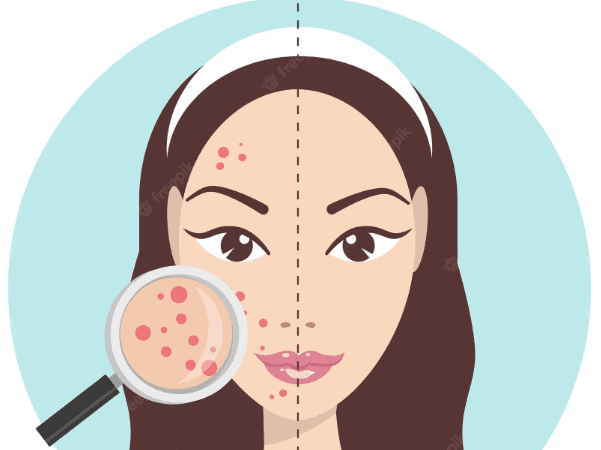What is Topical Clindamycin?
Topical clindamycin is a medication use to treat certain bacterial skin infections. It is a type of antibiotic that belongs to the lincosamide class. Clindamycin works by inhibiting the growth of bacteria and is effective against various types of bacteria, including Staphylococcus aureus and Streptococcus pyogenes, which are common causes of skin infections. Isotroin 10 mg & Tretiva 40 mg, a best acne treatment.
Topical clindamycin is typically available in the form of creams, gels, lotions, or solutions that are applied directly to the affect skin areas. It is commonly prescribed to treat conditions like acne, particularly cases where the acne is caused by bacteria.
When using topical clindamycin, it is essential to follow your healthcare provider’s instructions carefully and complete the full course of treatment. This will help ensure that the infection is completely eradicate and reduce the risk of developing antibiotic resistance.
Like all medications, topical clindamycin may have side effects, such as skin irritation, dryness, or redness at the application site. If you experience any unusual or severe reactions, it’s essential to consult your doctor promptly.
Uses
Topical clindamycin is primarily use for the treatment of bacterial skin infections, particularly those caused by certain types of bacteria. Some of the main uses of topical clindamycin include:
- Acne: Topical clindamycin is commonly prescribe to treat mild to moderate acne. It helps to reduce the number of acne-causing bacteria on the skin surface, which can help improve acne lesions and prevent new breakouts.
- Folliculitis: Folliculitis is an inflammation or infection of hair follicles. Topical clindamycin can be use to treat mild cases of folliculitis caused by bacteria.
- Cellulitis: Cellulitis is a bacterial skin infection that can cause redness, swelling, and pain in the affected area. Topical clindamycin may be use as part of the treatment plan for mild cases of cellulitis.
- Impetigo: Impetigo is a contagious skin infection commonly seen in children. Topical clindamycin can be used to treat localize impetigo lesions.
- Other bacterial skin infections: Topical clindamycin may be prescribe for various other bacterial skin infections as deemed appropriate by a healthcare provider.
How to Apply Clindamycin to Acne?
When applying clindamycin to acne, it’s essential to follow the instructions provided by your healthcare provider or as indicated on the product’s label. Here are some general steps for applying topical clindamycin to acne-prone areas:
Wash your hands:
Before applying any medication to your face or affected areas, wash your hands thoroughly with soap and water to ensure you don’t introduce any additional bacteria to the skin.
Cleanse your face:
Gently wash your face with a mild, non-medicated cleanser and pat it dry with a clean towel. This helps to remove dirt, excess oil, and other impurities from the skin surface.
Apply a thin layer:
Take a small amount of the topical clindamycin cream, gel, or lotion (as prescribed) and apply a thin layer to the affected areas. You can use your fingertips or a clean cotton swab to apply it evenly.
Avoid eyes, mouth, and open wounds:
Be cautious not to get the medication into your eyes, mouth, or on open wounds. If contact occurs, rinse thoroughly with water.
Follow the prescribed frequency:
Topical clindamycin is usually applied once or twice daily, depending on your healthcare provider’s instructions. Stick to the prescribed schedule and use the medication consistently for the recommended duration.
Be patient:
Acne treatment takes time, and you may not see immediate results. It may take several weeks before you notice a significant improvement in your acne. Continue using the medication as directed by your doctor.
Avoid using other topical products:
To prevent potential interactions or skin irritation, avoid using other topical products, especially those containing benzoyl peroxide or retinoids, unless specifically advised by your healthcare provider.
Moisturize if necessary:
If you experience dryness or skin irritation while using clindamycin, you can apply a non-comedogenic (won’t clog pores) moisturizer after the medication has dried.
Don’t overuse:
Using more than the prescribed amount or applying it more frequently won’t speed up the healing process and may increase the risk of side effects.
Keep up with follow-up appointments:
If your doctor has scheduled follow-up appointments, be sure to attend them. This allows your healthcare provider to assess your progress and make any necessary adjustments to your treatment plan.
Side Effects
- Skin irritation: Redness, itching, burning, or stinging at the application site are common side effects of topical clindamycin. This usually improves with continued use or by adjusting the application frequency.
- Dry skin: Some individuals may experience dryness or peeling of the skin at the application site.
- Allergic reactions: In rare cases, topical clindamycin may cause an allergic reaction. Symptoms of an allergic reaction may include rash, hives, swelling, severe itching, or difficulty breathing. Seek immediate medical attention if you experience any signs of an allergic reaction.
- Gastrointestinal symptoms: While less common with topical use, some people may experience mild gastrointestinal side effects, such as diarrhea or stomach upset.
- Photosensitivity: Clindamycin can increase sensitivity to sunlight, leading to a higher risk of sunburn or skin irritation when exposed to the sun. It’s essential to use sunscreen and protect your skin from excessive sun exposure while using this medication.
- Pseudomembranous colitis: In rare cases, clindamycin use can lead to a serious condition called pseudomembranous colitis, which causes severe diarrhea and abdominal pain. If you experience persistent or severe diarrhea while using topical clindamycin, contact your healthcare provider immediately.




